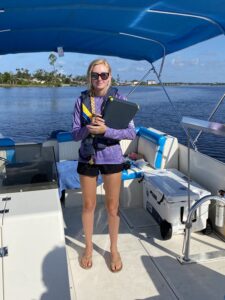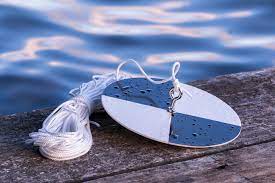Water Quality Monitoring
For nearly three decades, St. Andrew Bay Watch, a non-profit organization, has been devoted to monitoring water quality within the St. Andrew Bay watershed. Their aim is to create a water quality monitoring program that establishes a baseline data set across the St. Andrew Bay watershed. Bay County has funded St. Andrew Bay Watch to extend their previous long-term sampling regimen in the watershed to include a standardized array of stations across the bay and its major tributaries. A total of 70 monitoring stations have been established throughout the bay system in partnership with the University of Florida’s LAKEWATCH program. The program gathers data on nutrients, fecal coliform bacteria, chlorophyll-a, turbidity, temperature, pH, dissolved oxygen, salinity, tide, and precipitation. Annual reports are published to provide water quality trends and potential impacts to benthic organisms to decision-makers. The baseline and post-project water quality data are used to track future changes, which in turn assist the community and local stakeholders in developing comprehensive conservation and management plans to restore and/or improve the health of the bay.
It’s important to note that the standardized set of water quality monitoring stations vary across a range of depth, tide, and fresh/salt input. With 29 named bayous, St. Andrew Bay is vast and sprawling, with monitoring stations distributed 56 km (35 miles) from east to west and 25 km (15 miles) from the Gulf to inland. Observations are gathered once a month at each station, across varied seasonal and local meteorological conditions. The data collected provides a baseline of recent water quality conditions and captures daily, monthly, seasonal, and yearly variations over 30 years.
St, Andrew Bay Watch is committed to publishing an annual report that provides information to local, state, and federal agencies working towards protecting, restoring, and enhancing water quality and essential habitat in the St. Andrew Bay watershed. The data collected has helped identify pollution sources in St. Andrew Bay, understand how water quality affects the biological resources of the bay, and how it impacts the recovery of seagrasses and recruitment of scallops and oysters in the bay. This collaboration has raised awareness of the threats to natural resources, nurtured future stewards of these valuable resources, and collected credible data to better manage Florida’s aquatic systems. The data is available through the STORET system under organization code 21FLKWAT, and now in the WIN system.
St. Andrew Bay Watch Needs Water Quality Volunteers! Do you have a boat? do you have 2-4 hours a month you can spare? if you answered yes, we need you!

The success of the Bay Watch Program is due to our team of dedicated volunteers!
For more information about the Bay Watch Water Quality Program or how to volunteer, contact Christina Cantrell
